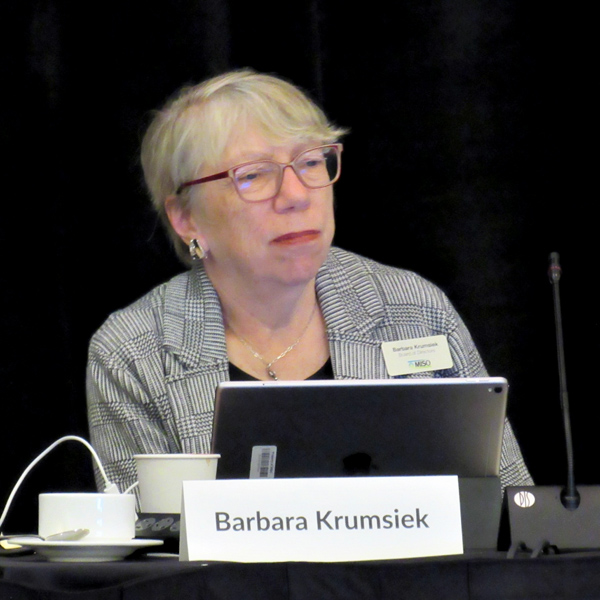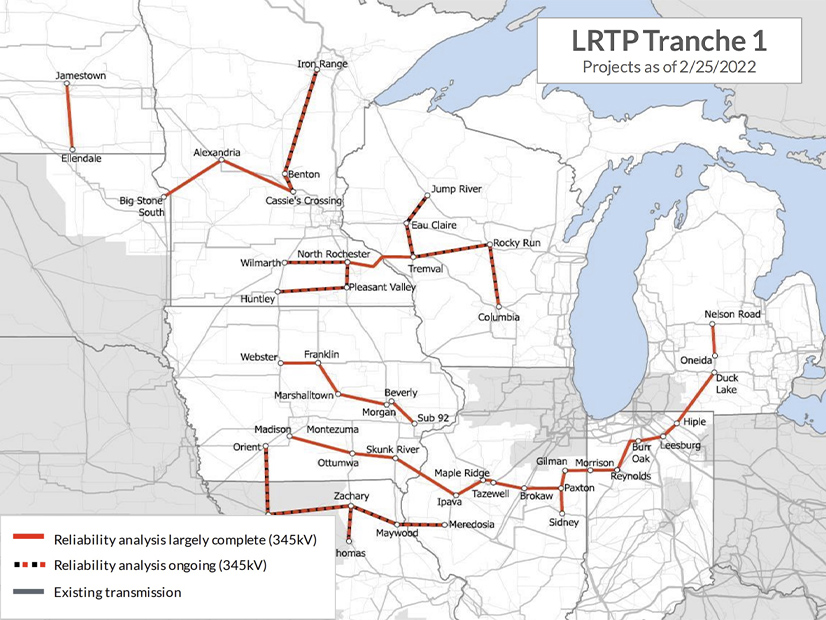MEMPHIS, Tenn. — MISO has delayed by a month a recommendation to the Board of Directors of a $13 billion package of long-range transmission projects.
During a Tuesday meeting of the board’s System Planning Committee, senior staff said they will seek board approval for the Midwestern 345-kV transmission lines in July instead of June.
Jennifer Curran, vice president of system planning, said the extra month will be used for an additional stakeholder workshop to discuss the projects. MISO had originally targeted a March approval for the first long-range projects.
“We do think it’s appropriate to act with deliberate speed, so we meet the reliability imperative,” Curran said of the remaining stakeholder discussions.
The stakeholder-led Planning Advisory Committee (PAC) will now consider whether to endorse the long-range portfolio May 27 instead of May 11. (See MISO Long-range Tx Plan Overlaps with SPP Study.)
Curran said staff are finalizing the first cycle of long-range plans “in earnest.” She said reliability analyses are complete and planners continue to work on business cases.
She reassured the board that benefits will be “well in excess” of the $13 billion portfolio MISO will recommend. The PAC meeting was the first time the RTO disclosed a cost estimate for the portfolio.
MISO has cut one long-range project, dropping one of two 345-kV lines in southern Minnesota.
Curran said MISO considers the first cycle of projects final, with no more project proposals accepted for consideration. She said additional projects “are best reserved” for the second tranche of proposals.
The first cycle of long-range projects nearly quadruples early spending estimates for the 2022 MISO Transmission Expansion Plan. (See Initial MTEP22 Portfolio has $3.3B in Costs.)
Curran said the projects’ business cases will account for bolstered reliability, reduced resource adequacy requirements, avoided transmission and generation projects, decarbonization goals, avoided load shed events, and savings stemming from decreased congestion.
 MISO Director Barbara Krumsiek listens to updates during Board Week in Memphis, Tenn. | ©RTO Insider LLC
MISO Director Barbara Krumsiek listens to updates during Board Week in Memphis, Tenn. | ©RTO Insider LLCMISO Director Barbara Krumsiek said the benefits being hashed out in the business cases are “priceless.” “We don’t want to see the lights go out,” she said. “We don’t want to see load loss.”
Director Mark Johnson thanked MISO for naming and analyzing the first projects.
“If you had asked me a year ago if we’d be where we are today, I wouldn’t have laid money on it,” he said. “But we have to move … I don’t think we can afford to wait. The decisions we’re making today will have an impact for decades.”
Johnson reminded stakeholders in the room that MISO and its members have a responsibility to ensure the grid’s continued reliability for “generations to come.”
“This is really a milestone getting to this day,” Clean Grid Alliance’s Beth Soholt said in agreement. However, she pointed out that the projects must go through challenging permitting and siting processes at state commissions.
Soholt invoked the Cardinal-Hickory Creek project, a stalled line from MISO’s 2011 long-term portfolio that’s been held up in lawsuits over its siting through a protected area. (See Federal Judge: Tx Line Can’t Cross Wildlife Refuge.)
“I just don’t want to have multiple Cardinal-Hickory Creeks,” Soholt said. “We really don’t have anything until we have these lines in the ground.”
She asked MISO to build a coalition of support around the long-range lines and spread awareness of their necessity.
Board Addresses Long-range, JTIQ Overlap
MISO board members also touched on a two-project overlap between the long-range plan and the Joint Targeted Interconnection Queue (JTIQ) study with SPP.
Two proposed projects in the Dakotas and Minnesota are included in both the JTIQ study results and MISO’s long-range transmission portfolio. The RTO said it will likely build the two projects on its own dime since long-range planning takes precedence over the JTIQ study and SPP’s benefits are small. Both projects are located within MISO’s footprint. (See MISO, SPP Finalize JTIQ Results with MISO Tx Duplicates.)
Some directors seemed torn on the decision not to seek projects costs from SPP.
“I don’t want to be parochial about it, but if there’s a cost to SPP …” Krumsiek said before trailing off.
“Do you want to wait, or do you want to proceed?” asked MISO President Clair Moeller, pointing out that it could take some time for the RTOs to agree on cost allocation for JTIQ projects. MISO has already filed for FERC approval of a postage stamp allocation for its long-range projects.
“I want to proceed,” Krumsiek answered quickly.
Aubrey Johnson, executive director of system planning, said should the two projects proceed under MISO’s long-range planning, they would become part of its base case modeling. He said staff would then re-run its analyses to update adjusted production cost savings estimates for the remaining JTIQ projects.
The grid operator plans to seek board approval of the JTIQ projects early next year.
The RTO also said it envisions working with SPP to make a joint filing of the JTIQ projects’ proposed cost-allocation methodology at FERC by the end of the year.
Johnson said the RTOs’ staff are under pressure to agree on a cost-allocation process, but he said both grid operators have found value in working together.
“We’ve got a relationship out of it,” he said. “And I think we’re better off for it.”



